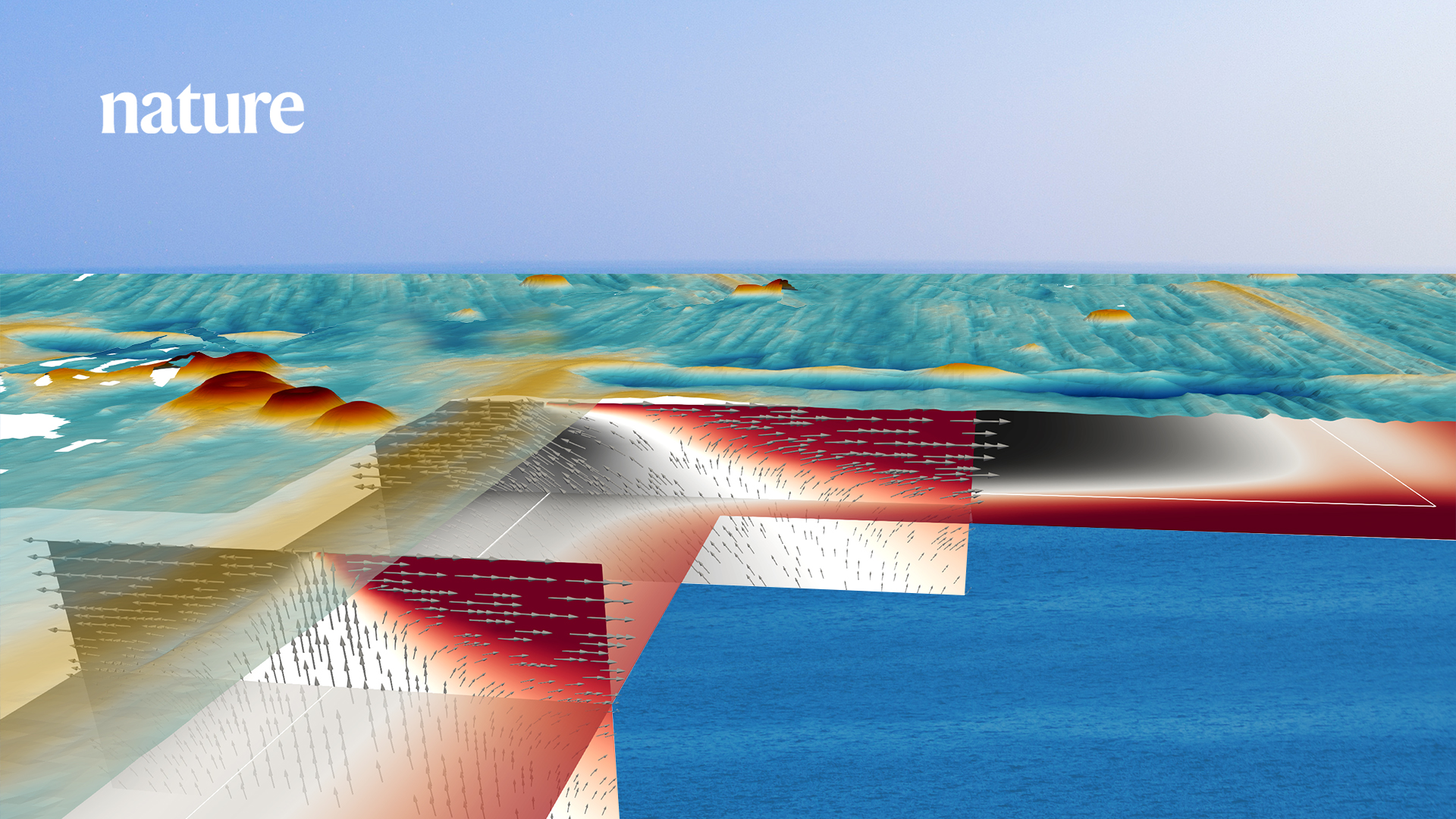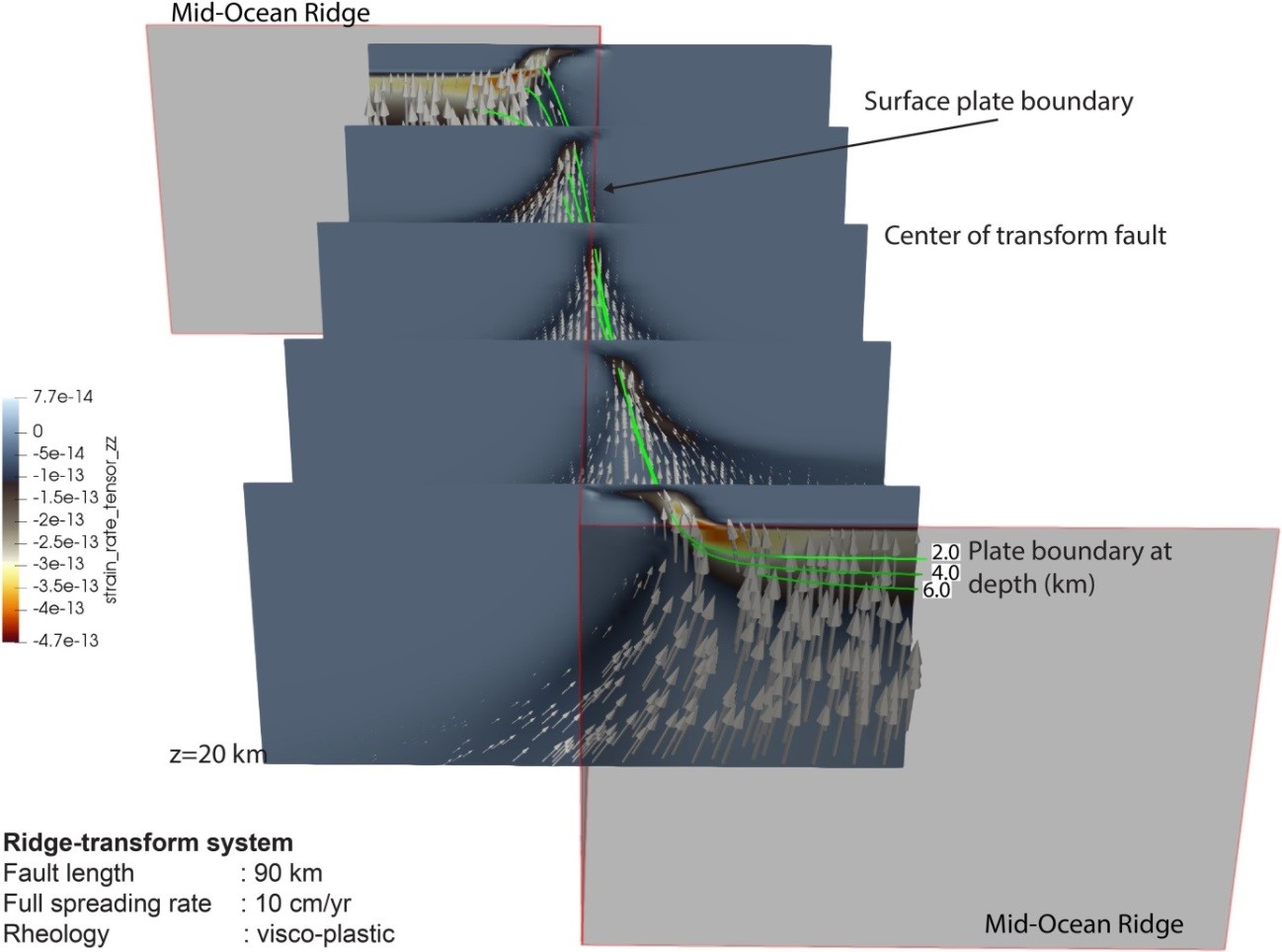On March 17, 2021, Chair Professor Jason P. Morgan from the Department of Ocean Science and Engineering at the Southern University of Science and Technology (SUSTech), in collaboration with scientists from GEOMAR Helmholtz Centre for Ocean Research Kiel (GEOMAR), and GeoModelling Solutions GmbH in Switzerland, published their study in the international scientific journal Nature. The paper, entitled “Extensional tectonics and two-stage crustal accretion at oceanic transform faults” questions a previous basic assumption of plate tectonics.


Figure 1. Selected ridge–transform intersections at various spreading rates. The colors indicate depths.
At mid-ocean ridges where tectonic plates meet, hot material from the Earth’s interior reaches the surface, cools down, and forms new ocean floor when the surface plates pull apart at speeds reaching up to 10 meters per hundred years. Individual segments of the mid-ocean ridges each begin or end in transform valleys that cut the ridges at nearly regular intervals. Previously, geoscientists have always assumed that two adjacent tectonic plates only slide past each other at these transform valleys, along transform faults, and that the seafloor remains intact as this happens.

Figure 2. Vertical strain rate in the ridge-transform system
The research team examined 40 transform faults in all ocean basins and saw that the transform valleys are significantly deeper than their adjacent fracture zones. The research team developed sophisticated numerical models and found an explanation for this phenomenon. According to their analysis, the plate boundary along the transform fault is increasingly tilted at depth, which leads to shearing and extension of the seafloor, which is what forms the deep transform valleys. These valleys are then filled up by a second phase of magmatism at the outer corners to the mid-ocean ridges so that the fracture zones become much shallower. The oceanic crust formed near these corners is the only crust in the ocean that is formed by two-stages of ridge volcanism. It is still needed to conduct further studies to understand its composition, for example, the distribution of metals in this crust, and also to better understand this new behavior in more detail.

Figure 3. Predicted flow pattern and brittle thinning at the Clipperton transform
This new finding reveals the mechanism of two-stage crustal accretion at oceanic transform faults, and provides an important addition to the theory of plate tectonics, improving our understanding of the evolution of mid-ocean ridges and the dynamics of our planet.
Professor Ingo Grevemeyer of GEOMAR is the first author of the paper. Professor Lars Ruepke and Professor Colin W. Devey, also of GEOMAR, Professor Jason P. Morgan of SUSTech, and Researcher Karthik Iyer of Geomodelling Solutions GmbH, are the co-authors of the paper.
Paper link: https://www.nature.com/articles/s41586-021-03278-9
Proofread ByAdrian Cremin, Yingying XIA
Photo By